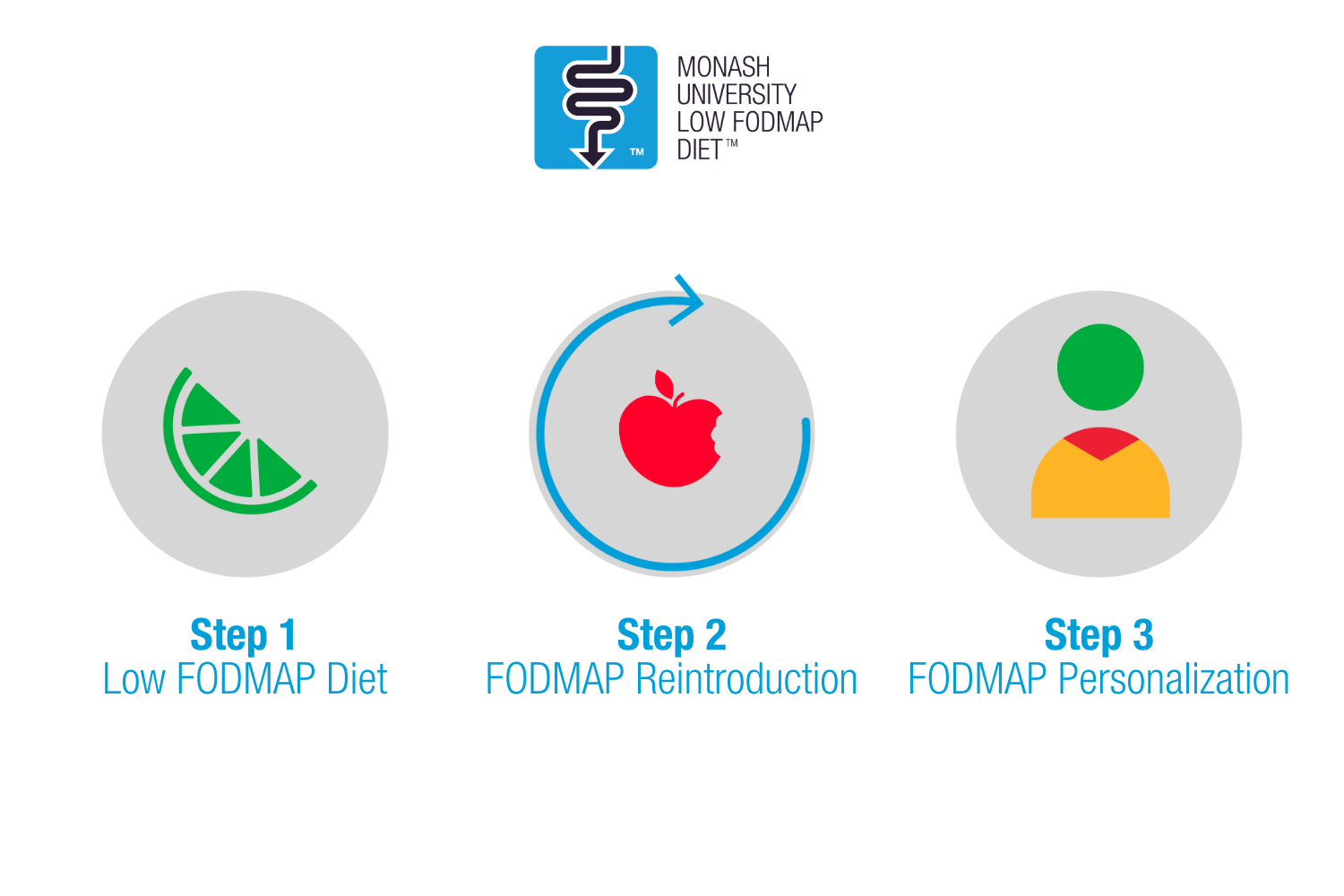
What do you do when you feel better following a low FODMAP diet? Reintroduce FODMAPs! While this may sound illogical, it is important for a number of reasons, first and foremost to ensure your diet is minimally restrictive, while still providing adequate symptom control. Read on for a simple guide to the 3 phases of the Monash University Low FODMAP Diet™.
Step 1. Low FODMAP
This is to be commenced under the supervision of a dietitian for a period of 2-6 weeks.
During this phase you would use the Monash University FODMAP Diet App to choose
foods with a ‘green’ serving size. This means that you only eat foods in a low FODMAP serve.
But remember, a low FODMAP diet is not an elimination diet. Rather, it is a substitution diet,
whereby you swap one food for another, e.g. switch your daily apple for an orange, or swap
an onion for chives.
Step 2. Reintroduction
This step involves reintroducing foods back into your diet in a methodical way to determine
which foods and FODMAPs trigger symptoms and which do not. Each FODMAP subgroup
should be reintroduced separately while your background diet remains low in FODMAPs. The reintroduction step is also best completed under the guidance of a dietitian, who will advise you on when to reintroduce; which foods to reintroduce with (e.g. mango to test your tolerance to excess fructose); the amount of the reintroduction food to have, and the order of reintroducing foods. Remember to have a break of a few days between reintroduction of foods to avoid any crossover effects. A dietitian will also help you to interpret your responses. It takes most people around 6 to 8 weeks to complete the reintroduction step.
Step 3. Personalization
The third step of the diet involves establishing your longer term, personalized FODMAP diet. Once your dietitian has interpreted your food triggers and tolerances, you can begin to reintroduce foods and FODMAPs that were tolerated well and avoiding ONLY the foods that triggered your symptoms. It is important to remember that FODMAP tolerance can change over time, so if there are foods you didn't tolerate as well, try again in a few months to see if anything has changed.
We understand there may be a hesitation to reintroduce foods, especially if you are feeling well after following a low FODMAP diet, but there are important reasons why you should complete Step 2 - Reintroduction and expand your diet. To read more about these reasons, take a look at our previous blog posts on the topic.